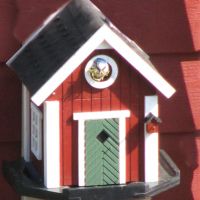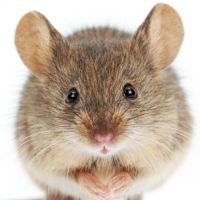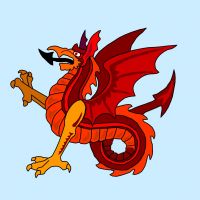Difference between layers and sheets
I'm a new user but am familiar enough with Cc3+ to make maps that look like what I want. It's clear that I am not using the software correctly, however.
If I'm correct, sheets are like sheets of glass with images on them (trees, buildings, whatever), and when the final map is viewed the sheets of glass are stacked, revealing the topmost image for each point in the map. That's pretty much like any image processor (I've been using Adobe for decades).
I can't understand the purpose of layers, however:
(1) Why not just include the various layer options as sheets?
(2) Why does each sheet have the same identical set of layers to choose from?
(3) If I place a Structure, does it matter which sheet it is on?
I've read the manual, which touches on this, but I still can't see the point of having two sets of identifiers.
Can anyone explain what I'm missing, or point me to a resource that can?
Thanks for your time.
Best Answer
-
 jslayton
Moderator, ProFantasy Mapmaker
jslayton
Moderator, ProFantasy Mapmaker
A sheet is a container of drawing entities (lines, polygons, houses, and so on). Each sheet has a name, visibility (show/hide), and an optional list of effects. The sheet order broadly controls the order in which entities are drawn. It's possible to put entities into the drawing that aren't on any sheet: these entities will be listed as being on the fictional "COMMON" sheet.
In contrast, every single drawing entity has a layer attribute. Each layer has a name, ID number, visibility, and freeze status. Layers provide a useful classification system for all drawing entities, including sheets.
Sheets and Layers are similar in that both are named things that let you control the visibility of potentially many other drawing entities. Sheets also allow you to control the drawing order, while layers let you lock things down (freeze a layer) so that you can't accidentally delete them.
1) Why have both sheets and layers? Layers were part of the original system design and sheets came at a later time is one point. Because every entity (including sheets) has a layer, it can be useful for organizing drawing elements for use with non-visual tools or to allow and disallow operations on certain kinds of entities. For example, the CORRIDOR and ROOM tools use the layer attribute to determine which entities were placed by those tools so that they can ensure correct operation when attaching new elements. Tools that deal with the map border also use entities with the MAP BORDER layer attribute to determine where the border lies. Some layers are frozen by default on most templates because it's generally a bad idea to do things like delete the control entities on the MAP BORDER layer, which will break tools that rely on using the map border.
2) A sheet is a container that can hold drawing entities, while every drawing entity is defined as possessing exactly one layer. It's not that each sheet has the same layers, but that there is one list of layers for the entire drawing regardless of sheet.
3) It can matter what sheet you place entities on because the drawing effect subsystem (bevels, blurs, drop shadows, and point lights) is based on sheets rather than layers. Because sheets also control the broad drawing order of the drawing, it is very possible to place entities on a sheet behind other entities where they can't be seen. Some specialty symbols can place drawing entities on more than one sheet as well as on more than one layer, but most use a single sheet and a single layer these days.





Answers
A sheet is a container of drawing entities (lines, polygons, houses, and so on). Each sheet has a name, visibility (show/hide), and an optional list of effects. The sheet order broadly controls the order in which entities are drawn. It's possible to put entities into the drawing that aren't on any sheet: these entities will be listed as being on the fictional "COMMON" sheet.
In contrast, every single drawing entity has a layer attribute. Each layer has a name, ID number, visibility, and freeze status. Layers provide a useful classification system for all drawing entities, including sheets.
Sheets and Layers are similar in that both are named things that let you control the visibility of potentially many other drawing entities. Sheets also allow you to control the drawing order, while layers let you lock things down (freeze a layer) so that you can't accidentally delete them.
1) Why have both sheets and layers? Layers were part of the original system design and sheets came at a later time is one point. Because every entity (including sheets) has a layer, it can be useful for organizing drawing elements for use with non-visual tools or to allow and disallow operations on certain kinds of entities. For example, the CORRIDOR and ROOM tools use the layer attribute to determine which entities were placed by those tools so that they can ensure correct operation when attaching new elements. Tools that deal with the map border also use entities with the MAP BORDER layer attribute to determine where the border lies. Some layers are frozen by default on most templates because it's generally a bad idea to do things like delete the control entities on the MAP BORDER layer, which will break tools that rely on using the map border.
2) A sheet is a container that can hold drawing entities, while every drawing entity is defined as possessing exactly one layer. It's not that each sheet has the same layers, but that there is one list of layers for the entire drawing regardless of sheet.
3) It can matter what sheet you place entities on because the drawing effect subsystem (bevels, blurs, drop shadows, and point lights) is based on sheets rather than layers. Because sheets also control the broad drawing order of the drawing, it is very possible to place entities on a sheet behind other entities where they can't be seen. Some specialty symbols can place drawing entities on more than one sheet as well as on more than one layer, but most use a single sheet and a single layer these days.
Thank you.
I think you answered all my questions, but I need some time to digest all that while fiddling around.
Your comment seems to boil down to, basically, defining every element in two dimensions (bear with me), such that they can be controlled through their sheet definition (one dimension) or their layer definition (second dimension). If this is indeed the case, then it would be a perfectly reasonable way to handle it, but I really, really wish ProFantasy had been more careful with terminology.
One thing I use layers for is to simultaneously reveal or hide things that because of different sheet effects need to be on different sheets. I once designed a five-level sewer system with each level of the sewers involving multiple sheets on a single layer for each level. Or a mountaintop covering a dungeon that can be hidden or revealed with a single layer.
I think (though I might be wrong) that when these two were named it might have been before 'layers' were commonly accepted as the industry standard as the things you draw on in bitmap apps. But I also get confused at times by the now non-standard names for things that we all used in the early days of computer graphics. I use bitmap apps more frequently than CC these days because I generate CC assets using Affinity, GIMP, Krita... etc, so it was several years before I stopped accidentally calling sheets layers, and layers sheets, back in the days when I was helping new mappers on a range of different mapping apps over at Cartographer's Guild.
However, that's a great explanation from Joseph Slayton about how it all works in CC.
These are the layers most commonly kept frozen so the entities on them don't get moved or deleted by mistake:
Layers that you shouldn't manually mess with:
Example maps usually have all the layers frozen so they can't be accidentally altered, but if you want to make a copy and unfreeze the layers to create your own version for a game, that's easy enough to do.
I'll throw my $0.02...
It helps to see layers as "labels". Even with al the tech stuff aside, it helps organize your work. A fountain and a building might be in the same sheet (SYMBOLS*) but they're a different thing, layers come in handy here.
But organizing your entities is just the first step. You can have many walls in the WALLS sheet but a few of them are on the SECRET layer (allowing you to hide them on the player handout).
Remember that when selecting entities, CC3+ allows you to pick by layer. So you could, for example, freeze everything but the ROADS layer so that you don't accidentally modify rivers, or terrain/vegetation fills. Or maybe you can select all the entities in the "BLDNG (INN)" to quickly change color to all inns.
Sheets define the order in which they're drawn. Layers define a semantic label.
defining every element in two dimensions
In some sense, yes. Just keep in mind that the selection interface works different for sheets and layers.
To select only entities in a given sheet, you'll have to hide every other sheet. But to select only on a given layer, you can either freeze every other layer or use the layer selection modifier:
so it was several years before I stopped accidentally calling sheets layers, and layers sheets
Heh. I still mix them up.
The historical note on naming is that use of the term "layers" in CC3+ is inherited from FastCAD, which was authored by a fellow who worked on the original AutoCAD before Adobe was established and long before Photoshop popularized layers as an ordering tool. Sheets bring that later concept (based on the CAD idea of having some elements drawn on acetate or vellum sheets so that they can be moved on top of or below other elements) to the code base. They are complementary and (as you say) orthogonal elements.
The ProFantasy tooling comes down through the AutoCAD lineage and so uses those terms. The CAD lineage also explains why the mouse architecture is based mostly on single clicks rather than click/drag/release (it was focused on digitizers) as well as the modeless action-object concept rather than a modal object-action paradigm. Its heritage from tiny machines and early CAD is also apparent in the lack of a robust redraw architecture as seen when reworking and selecting elements (they get drawn in a funny color because you can't redraw the whole screen at interactive rates on those old systems).
ProFantasy has managed to graft an amazing amount of functionality onto of the base engine (bitmap fills, sheet effects, MOVQ/COPQ interactive operations, drawing tools, and so on), but that base architecture is still there and colors what's reasonable to do. The underlying FastCAD engine packs an amazing amount of flexibility into its 70k likes of assembly code. The extensions that ProFantasy has added include about 100k lines of C code, which translates to significantly larger than the base FastCAD code.
Given that size of a legacy code base, it would be very difficult to change terminology for things like sheets and layers at this point.
Thanks to everyone for taking the time to respond in spite of the date. You've answered my questions and I'll go away again to attempt to turn theoretical knowledge into usable skill. Special thanks to Joseph Slayton.
I recognized the CAD DNA, as I was involved with a major CAD operation in (IIRC) around 1980, running on Univac systems. I never actually used the software myself, but was frequently stuck in arguments about how to force it to do what they needed it to do. Not the friendliest UI I've ever encountered. The backstory explains a number of things about why CC3+ is built the way it is, and why it's unlikely to change dramatically.
Wish you all a happy and healthy 2025!
I feel like the Dunce in the room. I understand layers from playing with Photoshop and the like. I found more layers was better (and to save often!). Even with all the explanations though, I cannot fathom sheets. My brain just won't click. Can sheets be ignored and just use layers? I am brand new to CC3
Sheet are the most important part. They give all of the effects to make truly amazing maps. Layers essentially now are just a sort tool.
Just keep adding layers to suit everything you add to a map. You can always move them later to a sheet so the effects will work on them.
Just view Sheets the same as layers in Photoshop. They work basically the same way. The naming confusion is just a result of the fact that when image editors started using what they call layers, they completely ignored that that name was already in use and had a different meaning in the CAD world.
As for layers, I don't recommend ignoring them completely, but for the most part, layers are set automatically and don't influence the outcome, so you can actually do most maps without thinking about them at all.
Hey all!
Sheets separate various effects. Use them to separate effects. For example, say you want a blur on specific fill, or a colorize, or a blend or whatever: Make as many sheets are you feel you need, partitioning off effects.
Layers organize the specific elements of your drawing: like mountains on one layer, reliefs on another, rivers on another etc and so on. Forests go on Vegetation.
Doing this, you can manipulate your maps as you see fit. Use both to your advantage. Always check which aspects of your drawing are on which sheet or layer. Choose which one goes to each.
Cal